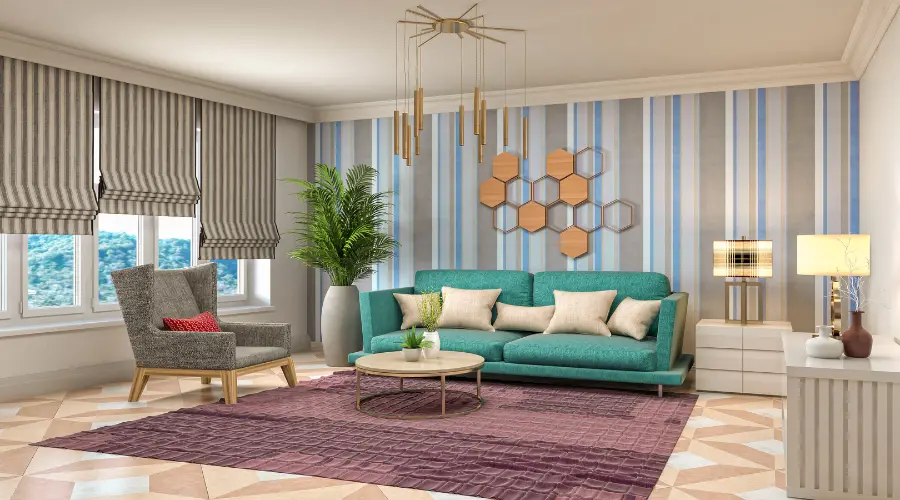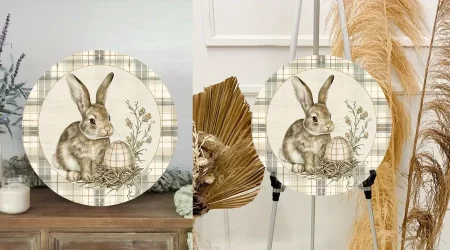Your home should be a reflection of your personal style and taste, and one of the easiest ways to achieve that is through the use of color. Choosing the right color palette for your home decor can be a daunting task, but the right combination of colors can create a beautiful and harmonious space that you can enjoy for years to come. From the walls to the furniture to the accessories, every element of your home can be enhanced with the right colors. But with so many options available, how do you choose the perfect color palette for your home? In this ultimate guide, we’ll help you navigate the world of color theory and give you practical tips and tricks for selecting a palette that will make your home feel like your own personal oasis. Whether you’re starting from scratch or looking to refresh your current decor, this guide will help you create a beautiful and cohesive space that you’ll love coming home to.
Understanding basic color theory
Before you start selecting colors for your home decor, it’s important to understand the basics of color theory. Color theory is the study of how colors interact with each other and how they can be combined to create different effects. It’s an essential tool for anyone interested in interior design or home decor.
The three primary colors are red, blue, and yellow. These colors cannot be created by mixing other colors together. Secondary colors are created by mixing two primary colors together. The secondary colors are green (blue and yellow), orange (red and yellow), and purple (red and blue). Tertiary colors are created by mixing a primary color with a secondary color.
Colors can also be classified as warm or cool. Warm colors, such as red, orange, and yellow, are energizing and create a cozy feeling. Cool colors, such as blue, green, and purple, are calming and create a relaxing atmosphere.
Choosing a dominant color for your space
The first step in creating a color palette for your home decor is to choose a dominant color. This color will be the main color in your space and will set the tone for the rest of your decor. The dominant color can be a bold hue or a neutral shade, depending on your personal style and the mood you want to create in your space.
If you’re unsure which color to choose, start by looking at the colors you already have in your home. Is there a color that stands out to you or that you particularly love? This could be a good starting point for your dominant color.
Another option is to look at color palettes online or in magazines for inspiration. You can also consider the mood or atmosphere you want to create in your space. Do you want a cozy and inviting feel? Consider warm colors like red, orange, or yellow. Do you want a calming and relaxing feel? Cool colors like blue, green, or purple might be a better choice.
Once you’ve chosen your dominant color, you can start building your color palette around it.
Creating a color scheme with complementary colors
Complementary colors are colors that are opposite each other on the color wheel. When used together, they create a bold and vibrant contrast that can add visual interest to your space. For example, blue and orange, red and green, and purple and yellow are complementary colors.
To incorporate complementary colors into your home decor, choose one color to be the dominant color and use the complementary color as an accent. For example, if your dominant color is blue, you could use orange as an accent color in pillows, curtains, or other accessories.
Another way to incorporate complementary colors is to use a pattern that includes both colors. This can be a great way to tie your color palette together and add visual interest.
How to use analogous colors in your decor
Analogous colors are colors that are next to each other on the color wheel. They create a harmonious and cohesive look that can be soothing and relaxing. For example, blue, green, and purple are analogous colors.
To use analogous colors in your home decor, choose one color to be the dominant color and use the other colors as accents. For example, if your dominant color is blue, you could use green and purple as accent colors in pillows, rugs, or other accessories.
Another way to incorporate analogous colors is to use a gradient or ombre effect. This can be a subtle way to incorporate multiple colors into your decor without overwhelming your space.
Tips for incorporating neutral colors into your palette
Neutral colors are colors that are not on the color wheel, such as white, black, gray, and beige. They are versatile and can be used as a backdrop for bolder colors or as the main color in your decor.
To incorporate neutral colors into your home decor, start by choosing a neutral base color for your walls and large furniture pieces. This could be white, beige, or gray. Then, add pops of color with accessories like pillows, rugs, and curtains.
Another way to incorporate neutral colors is to use different shades and textures of the same color. For example, you could use different shades of gray in your decor, along with textures like wool, linen, or leather.
Adding accent colors for visual interest
Accent colors are colors that are used in smaller amounts to add visual interest to your space. They can be bold and vibrant, or they can be subtle and understated.
To choose accent colors for your home decor, consider the colors you’ve already chosen for your dominant and complementary or analogous colors. Look for colors that complement or contrast with these colors.
Another option is to choose accent colors based on the mood or atmosphere you want to create in your space. Bright and bold colors like red, orange, or yellow can create an energetic and lively feel, while soft and muted colors like pastel blue or pink can create a calming and relaxing atmosphere.
Using patterns and textures to enhance your color scheme
Patterns and textures can add depth and dimension to your color palette. They can also help tie your color scheme together and create a cohesive look.
To incorporate patterns and textures into your home decor, start by choosing a dominant pattern or texture. This could be a floral print, a geometric pattern, or a natural texture like wood or stone. Then, choose colors from your color palette that complement or contrast with this pattern or texture.
Another way to incorporate patterns and textures is to mix and match different patterns and textures in your decor. For example, you could mix a floral print with a geometric pattern or mix a wool rug with a leather chair.
Common mistakes to avoid when choosing a color palette
When choosing a color palette for your home decor, there are some common mistakes to avoid.
One mistake is choosing too many colors. This can make your space feel cluttered and overwhelming. Stick to three or four colors in your color palette for a cohesive and harmonious look.
Another mistake is not considering the mood or atmosphere you want to create in your space. Choose colors that reflect the mood you want to create, whether that’s cozy and inviting or calming and relaxing.
Finally, another mistake is not considering the lighting in your space. Different lighting can affect how colors appear, so be sure to test your color palette in different lighting conditions before making a final decision.
Tools and resources for selecting the perfect color palette
There are many tools and resources available to help you select the perfect color palette for your home decor.
Online color palette generators can help you visualize different color combinations and see how they will look in your space. Some popular color palette generators include Coolors, Canva, and Adobe Color.
Paint companies like Sherwin-Williams and Behr offer color visualizers that allow you to see how different colors will look on your walls.
Finally, interior design blogs and magazines are a great source of inspiration for color palettes and home decor ideas.
Conclusion and final tips for creating a cohesive and inviting home decor
Choosing the perfect color palette for your home decor can be a fun and exciting process. By understanding basic color theory, choosing a dominant color, incorporating complementary or analogous colors, and adding neutral and accent colors, you can create a beautiful and harmonious space that reflects your personal style and taste.
Remember to consider the mood or atmosphere you want to create, and be mindful of common mistakes like choosing too many colors or not considering the lighting in your space.
With the right tools and resources, and a little creativity, you can create a cohesive and inviting home decor that you’ll love coming home to.










